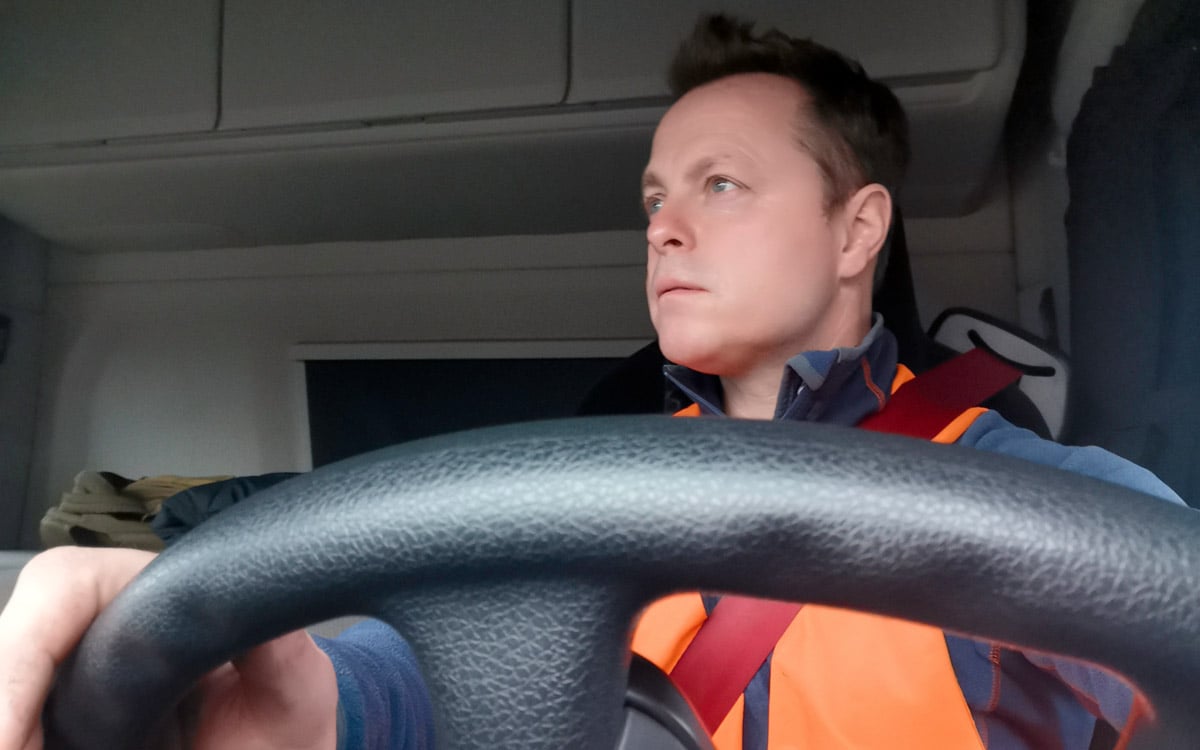Protecting Vulnerable Road Users
Every so often we are profoundly reminded about why we do what we do here at SGESCO-MAX: create safety solutions for protecting vulnerable road users...

Putting a dollar figure to the value of a human life is an odd thing to do. Many of us do it though, when taking out life insurance to cover our debts and to provide for our spouse and dependents.
But what would you pay to ease your own or a loved one’s suffering, or give them much needed medical care – be it an operation or treatment – so they can live full and functioning lives? Many of us would pay whatever it costs.
When it comes to protecting vulnerable road users and blind spot prevention, there’s a lot more heavy-vehicle fleet managers could do regarding the adoption of safety technology that one day, just might, save the life of their own loved one. It might also save your company’s clean safety record, as well as the administrative headaches and costs that come from the investigation around an accident.
1200 people die on Australian roads each year. Around 400 of these fatalities, 1 in 3, are vulnerable road users. Over 3,000 people are added to the Australian Trauma Registry with severe injuries after a vehicle accident, and 40,000 people are hospitalised; 10,000 are admitted with life threatening injuries. Each year, the cost of vehicle accidents to the Australian economy is $30 billion. That’s a figure that most people cannot relate to – it is so far removed from anything at a personal level.
Below, we’ve pulled average cost scenarios together, along with the costs of safety solutions now available from SGESCO-MAX, to show how affordable and worthwhile blind spot prevention is to Australia’s heavy vehicle industries.
When looking at the costs of a single road accident caused by a heavy vehicle, the costs fall largely into 4 areas:
In some instances, you will see these classified as: Human, Property, General. This page lists 13 Human Costs, 4 Vehicle Costs and 5 General Costs.
There are a several studies that seek to quantify this cost to the parties involved (primarily at fault). Let’s take a look:
According to Australian Transport Assessment and Planning figures for June 2013, the AVERAGE costs, when including deaths and injuries in accidents involving cars as well as heavy vehicle, were:
| TYPE | Total Ave Amount | Insurance (A) | Insurance Admin (B) | Transport Delays (C) | Subtotal ABC |
| Fatal | $2,463,432 | $18,495 | $47,089 | $73,483 | $139,067 |
| Serious Injury | $629,000 | $35,592 | $56,993 | $88,935 | $181,520 |
| Slight Injury | $22,992 | ||||
| Property Damage Only | $9,257 | ||||
| Spinal Cord Injury | $6,100,000 | ||||
| Paraplegia/Quadriplegia | $9,400,000 |
The Insurance Admin cost is a combined cost from the at fault company and insurance company.
The Transport Delays field is a cost for the at fault vehicle/s and other vehicles impacted by the delay.
The Australasian Transport Research Forum 2010 Report noted: “The more likely the truck driver will be found at fault, the more likely the trucking insurer will be willing to settle at a higher figure.”
THE INJURED PARTY
These costs cover:
In some instances, costs regarding pain and suffering elements can be over $8 million alone. (Source)
This figure is likely for major injuries requiring emergency treatment and multiple operations. Read this blog about the 37 operations one vulnerable road user had to endure on her journey to walk again.
Insurance cost elements will likely be covered by compulsory 3rd party insurance, company public liability insurance, and professional indemnity insurance. Insurance pay-outs will naturally invoke payment of excesses to cover said pay-outs.
DRIVER
When drivers of heavy vehicles are involved in an accident, or cause an accident, there are the costs, to both drivers as well as their company, of:
TRUCK/PROPERTY
Third party damage to other vehicles or property.
Towing, Repairs, and Downtime costs of vehicles involved in accidents. Average costs, as per the 2013 report, were:
(Note these figures also include car accidents (the majority of accidents))
REGULATION
An inquest into the death of a trucking company worker (who died on 6 August 2010) in the Gold Coast Hospital, found that the company M.K.M Earthworks was negligent in its training, safety procedures, and equipment maintenance. Source.
The company was fined $125,000. It was noted that had blind spot safety equipment been installed, at a cost of less than $1,000 on a $70,000 dog trailer, the accident may not have happened.
Where does that leave you from a cost perspective?
Even with full insurance to cover all costs relating to litigation, vehicle/property damage, repairs, and negligence payouts, a company will still be left out of pocket. Let’s take the subtotal of ABC up above for Serious Injury ($181, 520) – a much more likely outcome than death, and a more likely outcome in accidents involving heavy vehicles where there are survivors. The above statistic aggregates cars and trucks, so the total cost is likely higher for trucks. However, even when conservatively estimating 50% of that cost, you are still looking at $90,000 in out-of-pocket costs.
The SGESCO-MAX Safety Eco-System™ provides a range of safety technologies for blind spot prevention and other safety risks. This includes:
They are designed to protect drivers, passengers, site workers, vulnerable road users and more.
To install and certify a safety solution in a standard 4.5 tonne truck during the build stage or as a retro-fit costs between $5,500 and $7,500 ex GST, depending on the vehicle (airbrake verse mechanical brake). These are long-term solutions that provide certainty and security for 15 or 20 years. Subscription servicing and updates are also available.
Compared to the cost of dealing with a major accident, it’s practically peanuts.
The Australian government has set a goal of zero road deaths by 2050, with heavy vehicle safety being one of the nine key measures. Our safety solutions will help you take a proactive approach before blind spot prevention technology becomes compulsory. We note this is already happening in some locations and in some industries (e.g., Sydney and construction, and Melbourne and civil projects).
Do you want to be a responsible leader, or a regretful follower?

Every so often we are profoundly reminded about why we do what we do here at SGESCO-MAX: create safety solutions for protecting vulnerable road users...

The Brisbane 2032 Olympics will herald a construction boom across SE QLD. With that comes increased risks to Vulnerable Road Users. Will SE QLD...

Blind spot monitoring systems were first introduced in 2005 by Volvo as an option for their top-of-the-line passenger sedans. Today, they are almost...